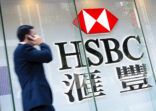The 10-year data revealed that among the 10 selected geographic sectors, quite expectedly, Chinese equities are most strongly correlated with Asia-Pacific ex-Japan and emerging market equities, as these funds by definition include sizeable allocations to China.
Correlation of China equity fund returns with other sectors over 10 years

Data: FE, as of 7 June 2017
Notably, the “emerging Asia” category showed less of a correlation with Chinese equity funds, reflecting the category’s lower exposure to China, and more focus on other countries in the region, in particular India.
Chinese equities showed the weakest correlation with the markets of Japan, India and North America and a somewhat higher correlation with Europe, Taiwan and Latin America.
Historical correlation of China equity fund returns with other sectors

Data: FE, Average annual correlation in Hong Kong dollars
When looking at correlation of Chinese equity funds with other sectors over time, FSA noted that de-correlation seems to have begun around May 2013, when the US announced it would taper its asset buying program, known as the “taper tantrum”. China was not heavily exposed to US interest rate hikes like other markets.
2014 stood out as an anomaly. The year-end rally, which saw China’s stock market rise 21% in 10 days, underscored how decoupled China’s stock market was at that time from global markets. Driven mostly by retail investors with little experience, prone to irrational exuberance, the market moved largely out-of-sync with global markets.
The rally persisted into the first half of 2015. As seen in the chart below, in 2015 China’s equity market movements became roughly synchronised with global markets, resulting in a correlation close to the long-term average.
Performance of China equities mutual funds vs international equity category

In Hong Kong dollars. Data: FE
















